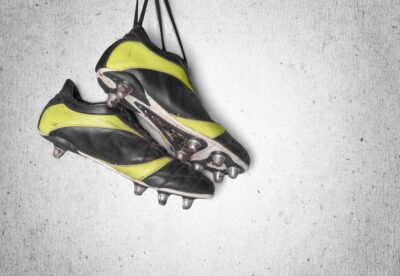Hanging Up the Cleats

{4 minutes to read} So when is it time to hang up the cleats? Some pitchers or quarterbacks hit the wall at 30, others, far fewer, at 40. If you’re a gymnast (not that they wear cleats), forget it. Lasting past 25 can be a miracle. And when should a President hang it up?
In my last blog piece, I wrote about the need to persevere when it comes to mediation; that the job of the mediator is partly to keep the parties talking and not let them walk out of the room. Or, to stay in touch even after they do walk out of the room.
I have had mediations where after a long, hard day there is no resolution and the parties leave feeling a bit disappointed and expecting to continue their case in court. Even then, they typically feel the mediation was worth the effort. They may have a better understanding about the other side’s case, or be able to efficiently accomplish some discovery that might have otherwise taken longer, but that is that. However, several phone calls later, over a few days, or weeks, often there’s movement, and then more movement, and then maybe, a resolution. But not always.
Often there’s no magic moment as to when you know a mediation has reached its limit and the parties simply need to pursue the litigation. Sometimes, one or both sides don’t wish to continue the mediation any more. And they may be right. The possibilities have been exhausted.
But here’s the good thing: If you look at the data kept by court-annexed mediation programs, what you’ll see is that while global settlement rates usually hover in the 50% range, satisfaction rates in those same programs are often in the 90% range. For example, in the Northern District of California, while the settlement rate for mediation cases filed in calendar year 2018 was approximately 63%, 88% of attorneys with cases in mediation reported that the benefits outweighed the costs. And 92% said they would volunteer another case to participate in the program. (ADR Annual Report 2019)
Court backlogs due to the pandemic have boosted the implementation of court-annexed mediation programs. Given that, it’s especially important to recognize that a “failed” mediation may still have significant benefits. Ideally, a case will settle through the mediation. But since there are no guarantees, it’s important to consider before going into one, what you as a party or counsel, would like to accomplish if the case does not get resolved. What can you learn from it?
There is nothing devious to this. I have never seen a party gain a strategic advantage to a litigation as a result of the mediation. If one side becomes convinced the case should not settle, for whatever reasons — the parties are too far apart, they need to have a judge rule on an issue — it’s still likely the mediation helped them reach that decision. And probably more quickly than they otherwise would have.
So, should you stick it out a little longer, or decide to call it a career? Either way, if you plan properly you’ll find you have spent your time well.
What has your experience been?
 |
Gary Shaffer Shaffer MediationGary@ShafferMediation.com |
